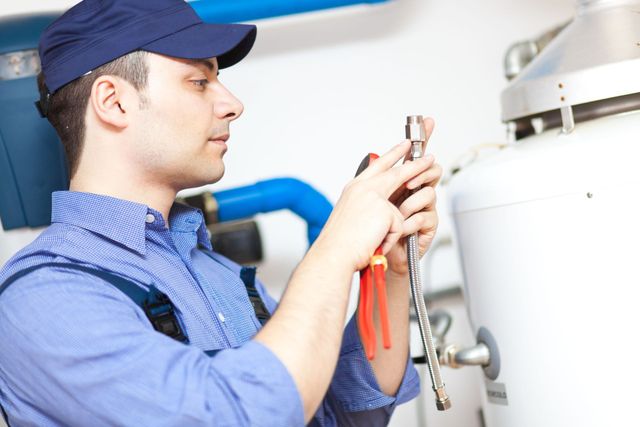Useful Techniques for Caring for Your Home's Hot Water System
Useful Techniques for Caring for Your Home's Hot Water System
Blog Article
The article down below in relation to How to Maintain Your Water Heater & Prolong its Life is immensely intriguing. Don't miss out on it.

Warm water is crucial for daily comfort, whether it's for a revitalizing shower or washing meals. To guarantee your warm water system runs successfully and lasts much longer, regular upkeep is crucial. This write-up supplies useful tips and understandings on exactly how to keep your home's hot water system to avoid disturbances and costly fixings.
Intro
Maintaining your home's hot water system could seem daunting, yet with a few straightforward steps, you can guarantee it runs smoothly for several years to find. This guide covers whatever from understanding your hot water system to DIY upkeep suggestions and recognizing when to hire specialist assistance.
Relevance of Maintaining Your Hot Water System
Routine upkeep not only expands the life expectancy of your hot water system but also guarantees it runs effectively. Disregarding maintenance can bring about decreased effectiveness, higher energy costs, and even premature failing of the system.
Signs Your Hot Water System Needs Maintenance
Recognizing when your warm water system needs interest can protect against major problems. Look out for indications such as irregular water temperature level, strange noises from the heating system, or corroded water.
Understanding Your Warm Water System
Prior to diving into maintenance tasks, it's handy to understand the fundamental parts of your warm water system. Usually, this includes the water heater itself, pipes, anode poles, and temperature level controls.
Monthly Upkeep Tasks
Normal monthly checks can help catch minor problems prior to they escalate.
Flushing the Water Heater
Flushing your water heater eliminates debris build-up, boosting effectiveness and extending its life.
Monitoring and Changing Anode Rods
Anode poles stop rust inside the container. Examining and replacing them when worn is important.
Inspecting and Changing Temperature Settings
Adjusting the temperature level setups makes certain optimum efficiency and safety and security.
Do It Yourself Tips for Upkeep
You can do numerous upkeep jobs on your own to keep your hot water system in top condition.
Checking for Leaks
On a regular basis examine pipelines and links for leaks, as these can bring about water damages and greater costs.
Checking Pressure Relief Valves
Testing the stress relief valve ensures it functions appropriately and protects against extreme pressure buildup.
Insulating Pipes
Shielding warm water pipes reduces heat loss and can conserve energy.
When to Call an Expert
While DIY upkeep is beneficial, some concerns need professional proficiency.
Complex Issues Needing Expert Help
Instances include significant leaks, electric troubles, or if your hot water heater is regularly underperforming.
Regular Expert Maintenance Conveniences
Expert upkeep can consist of extensive inspections, tune-ups, and making certain compliance with safety requirements.
Conclusion
Regular upkeep of your home's hot water system is necessary for efficiency, long life, and expense financial savings. By complying with these ideas and knowing when to seek expert help, you can guarantee a reputable supply of hot water without unanticipated interruptions.
Water Heater Maintenance Tips
Test the TPR Valve
Shut off the power and the cold-water supply valve. Place a bucket under the pipe connected to the temperature-pressure-release (TPR) valve on the top or side of the tank. (This valve opens if the tank pressure gets too high.) Lift the valve’s tab to let some water out, then let go. If water keeps flowing, drain the tank partway, unscrew the old valve with a pipe wrench, and install a new one. Check the Anode Rod
Put a hose to the tank’s drain cock and let out a few gallons of water. Now fit a 1 1/16-inch socket onto the rod’s hex head on top of the heater (or under its top plate) and unscrew the rod. If it’s less than ½ inch thick or coated with calcium, buy a new one, wrap its threads with Teflon tape, put it back in the tank, and tighten securely. Use this segmented rod if headroom above the tank is limited. Drain the Tank and Wash Out Sediment
Drain the remaining water in the tank into the bucket, then stir up the sediment on the tank’s bottom by briefly opening the cold-water supply valve. Drain and repeat until clean water comes out of the hose. Close the drain cock, refill the tank, and turn its power back on. Adjust the Temperature
Find the temperature dial on the side of the tank and unscrew its cover. Adjust the dial to 120 degrees using a flathead screwdriver. For every 10 degrees the temperature is lowered, you can expect to save up to 5 percent in energy costs. Turn the water heater off or the thermostat down to its lowest setting if you plan to be away from home for more than three days. Insulate the Pipes
Buy some self-sticking 3/8-inch-thick foam pipe insulation that matches the pipes’ diameter. Slide the foam over the hot-and cold-water pipes as far as you can reach. Insulating the cold-water pipe prevents condensation in summer. Peel the tape and squeeze the insulation closed. If the pipe is 6 inches or less from the flue, cover it with 1-inch-thick unfaced fiberglass pipe wrap. https://www.thisoldhouse.com/plumbing/21016402/how-to-maintain-a-water-heater

As a serious reader about What Kind of Maintenance Do Water Heaters Need?, I imagined sharing that information was worth the trouble. Sharing is nice. Helping people is fun. I take joy in your readership.
This Site Report this page